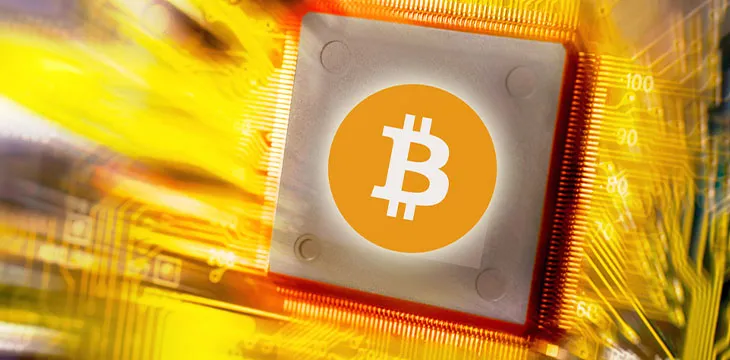|
Getting your Trinity Audio player ready...
|
Seemingly out of nowhere, Ordinals NFTs have taken BTC by storm.
After developer Casey Rodarmor leveraged changes introduced by Segwit and Taproot, tens of thousands of inscriptions have been written to the BTC blockchain, sparking fury, condescension, and outright calls for censorship from BTC Core developers and small block extremists.
YouTuber Hayden Otto used his channel to call out the maximalists who fancy themselves as Bitcoin gatekeepers and expose the contradictions and hypocrisy in their actions.
Ordinals spark renewed interest in BTC
Otto begins by giving a high-level overview of the Ordinals NFTs situation. He outlines how, thanks to protocol changes introduced by BTC Core developers such as Luke Dashjr, developer Casey Rodarmor found a way to enable NFT inscriptions on the BTC blockchain.
Unlike Ethereum NFTs, Ordinals are inscribed and stored on the BTC blockchain. Ironically, the inscription on BTC is much cheaper than it is on Ethereum, even after repeated attempts by Vitalik Buterin and other Ethereum developers to fix the outrageous gas fees on the beleaguered blockchain.
Ordinals have led to the highest number of transactions per day in one year, and according to some sources, they account for around 50% of BTC transactions (and growing). This leads to more revenue for miners and the largest block in BTC history—a whopping 4MB.
Despite this positive energy, a renewed conversation about Bitcoin’s capabilities, and the increased revenue for miners, the self-appointed BTC gatekeepers have expressed disgust and rage over Ordinals, calling them an attack on the network.
They are trying to paint ordinals as an attack when they themselves are attacking it, – Hayden Otto
Contradictions and hypocrisy abound, but that’s nothing new
Why are BTC maximalists so angry about Ordinals? Are they really purists who believe BTC should only act as digital gold? While they may try to paint that picture, Otto points out that, with a bit of digging, it’s easy to see what the agenda is.
Blockstream, a company founded by Adam Back, Lukedashjr, and Gregory Maxwell, has built for-profit side chains to collect fees on Bitcoin transactions of various kinds. While these are sold as scaling solutions, in reality, they’re the reintroduction of trusted third parties, and since Blockcstream controls them, they can collect fees to infinity if people use them.
One of these sidechains (Liquid) just happens to have a competing NFT protocol. Could Back, Dashjr, and the loudest of the maximalists be acting in self-interest rather than on principle? One doesn’t need to reflect on human nature for too long to figure that one out.
Back has called for miners to outright censor Ordinals transactions. After facing huge backlash, he retracted his statements and stated that people need to be “educated” on why the Ordinals are bad for BTC. What happened to censorship resistance, Adam?
Aside from Back, Luke Dashjr has been one of the loudest critics of Ordinals. As well as kicking and screaming on Twitter, he created a patch to help so-called node operators ignore Ordinals transactions. Ultimately, this is futile because as anyone who has been paying attention already knows, home nodes do nothing, and Ordinals transactions are processed by real nodes (miners) who are only too happy to pocket the fees.
Left is likely your mempool. On the right is mine without #Bitcoin NFT spam. Both snapshots were taken at the same time. Which do you prefer? pic.twitter.com/SXJTy6S0g3
— BITC0INALLCAPS 🐦🐦🐦 (@BITCOINALLCAPS) February 20, 2023
Here is a BTC maximalist getting schooled by real Bitcoiners about the futility of ignoring Ordinals transactions and how useless his ‘node’ really is. He even admits it does nothing but says that his choice to ignore them is most important.
In his insightful video, Otto asks a related and hugely important question: How does Lukedashjr still have repo access to BTC Core when he admitted that he was repeatedly hacked recently? After all, a security breach was used as the pretense to revoke Gavin Andresen’s access in 2016. Could it be that Andresen’s public statements about the identity of Satoshi Nakamoto were the real reason he was booted out? In any case, it’s yet more blatant hypocrisy from the BTC Core devs.
All of this can be done better on Bitcoin SV
While Casey Rodarmor is clearly a bright developer, and he should be commended for waking people up to some of the hidden capabilities of even broken Bitcoin protocol forks like BTC, he has sadly missed the forest for the trees and still doesn’t understand Bitcoin’s true capabilities. He recently took to Twitter to make some scathing comments about BSV even though many in the community were supportive of Ordinals and despite receiving death threats from some BTC maximalists.
Yet, there is hope that when BTC Core dictators inevitably act to stop Ordinals, he and others will awaken to the true power of Bitcoin as BSV. On Satoshi’s original protocol, developments like Ordinals are welcomed and encouraged, and the average fee to inscribe is a fraction of the cost with no scaling ceiling.
Slowly, yet finally, at least some BTC advocates may be awakening and beginning to ask questions. While Rodarmor himself is too wedded to BTC to make a full realization, thousands of others are watching, wondering, and beginning to question the narrative.
The BTC community is absolutely wild.
Maxis call ordinals a scam/altcoins with pictures.
Ordinals maxis call sidechains scams/shitcoins.
— Gen (@splainiff) February 13, 2023
Will we see another civil war in BTC as a result of this? It seems likely. When it happens, those who want the freedom to build on a protocol that does not change, scales infinitely, and welcomes creativity and experimentation will be welcome on Bitcoin SV.
Watch: Joshua Henslee’s opinion on Ordinals NFTs

 07-01-2025
07-01-2025 





